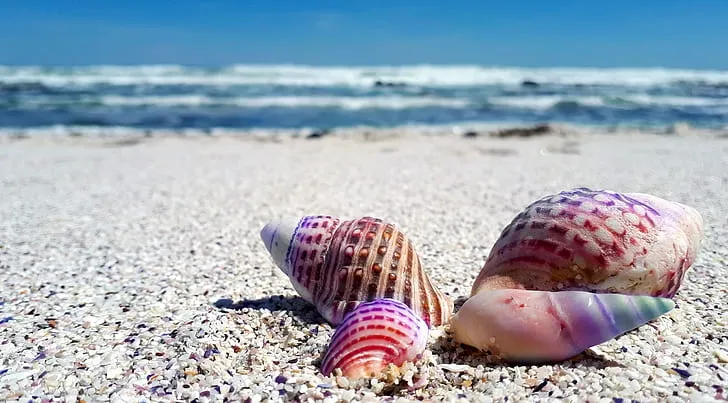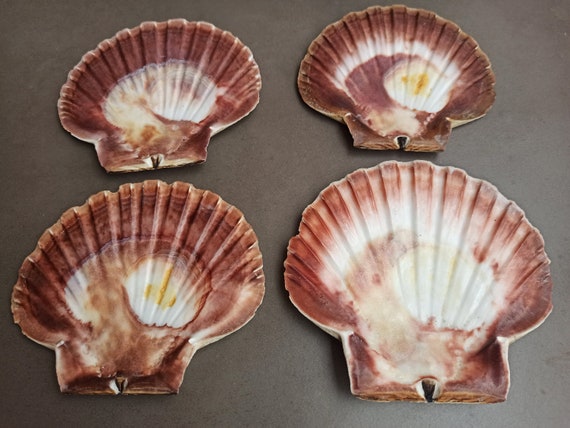Sea Shells: Nature’s Oceanic Gems...!!!
Sea shells are more than just beautiful ocean treasures; they are vital to marine ecosystems and have been an integral part of human culture for centuries.

Sea shells are the exoskeletons of marine mollusks and other sea creatures. Often found washed ashore, these shells have intrigued humans for centuries due to their beauty, diversity, and intricate patterns. They provide protection for the soft-bodied animals inside and come in a myriad of shapes, sizes, and colors.
Types of Sea Shells
1. Gastropod Shells
Gastropod shells are the most prevalent type of sea shells. Typically spiral-shaped, they belong to snails and slugs.
-
Conch Shells: Conchs are large, spiraled shells with a pointed end. They are commonly used as musical instruments and decorative items. Found in warm, tropical waters, conch shells are home to conch snails.
-
Cowrie Shells: Cowries are smooth, shiny shells with a distinctive egg-like shape. Historically used as currency in various cultures, they are often found in tropical regions.
-
Turban Shells: With a rounded, turban-like shape, these brightly colored shells are found in shallow waters and inhabited by turban snails.

2. Bivalve Shells
Bivalve shells consist of two hinged parts and belong to clams, oysters, and scallops. These shells are often symmetrical and come in diverse shapes and sizes.
-
Clam Shells: Typically oval or triangular, clam shells are commonly found on sandy shores. They are used in culinary dishes and for making jewelry and crafts.
-
Oyster Shells: Oysters have rough, irregular shells often used in the culinary world. Found in estuaries and coastal waters, oyster shells are a staple in seafood cuisine.
-
Scallop Shells: Featuring a fan shape with radiating ridges, scallop shells are prized for their beauty and often used in art and decoration.
3. Cephalopod Shells
Cephalopod shells belong to marine animals like squids and octopuses. While many cephalopods have internal shells, some possess external shells.
-
Nautilus Shells: Nautilus shells are spiral-shaped with a series of internal chambers. Their intricate patterns make them popular in jewelry and decorative items.
-
Spirula Shells: Coiled and belonging to the ram's horn squid, these shells are less common and often found washed up on beaches.
4. Tusk Shells
Tusk shells, or scaphopods, are tubular and tusk-like, open at both ends. Found in deep-sea environments, these shells are used by mollusks for burrowing into the sea floor.
5. Chiton Shells
Chitons have shells composed of eight overlapping plates, providing flexibility and protection. Found on rocky shores, these shells are known for their unique structure.
Significance and Uses
Natural Habitat and Ecosystem
Sea shells play a crucial role in marine ecosystems. They provide habitat and protection for various sea creatures. After the animals die, their shells contribute to sediment formation, aiding in the development of sand and coral reefs.

Human Uses
Humans have utilized sea shells in various ways:
-
Art and Decoration: Shells are widely used in jewelry, crafts, and home decor. Their natural beauty and variety make them popular among collectors and artisans.
-
Culinary: Shells like clams and oysters are used in cooking, often serving as decorative elements or dishes in culinary presentations.
-
Currency: Historically, shells such as cowries were used as currency in various cultures due to their rarity and beauty.
-
Musical Instruments: Large shells like conchs have been used as wind instruments across different cultures. Blowing into the shell produces a unique sound with cultural and ceremonial significance.
Sea shells are more than just beautiful ocean treasures; they are vital to marine ecosystems and have been an integral part of human culture for centuries. From the diverse shapes and sizes of gastropod and bivalve shells to the intricate patterns of nautilus shells, each type has unique characteristics and uses. Understanding and appreciating these natural wonders help us connect with the marine world and recognize the importance of preserving these delicate ecosystems.
What's Your Reaction?

















